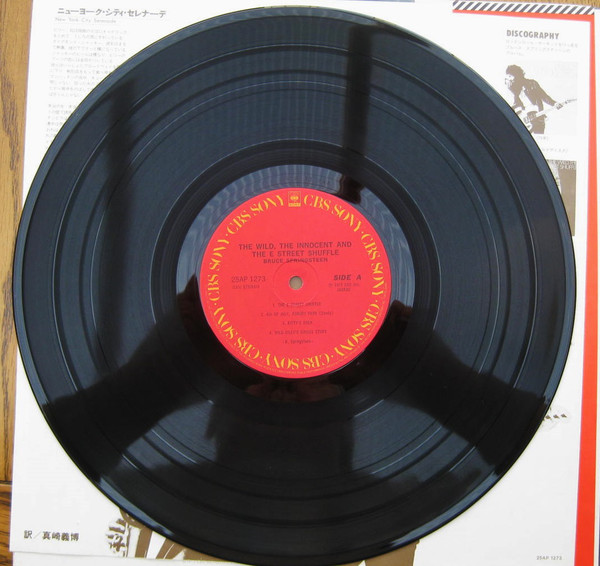
The following songs from the album's recording sessions remain officially unreleased: Out of those eleven, "Zero and Blind Terry", "Thundercrack", "Seaside Bar Song" and "Santa Ana" were released on the Tracks box set, whereas " The Fever", a song which had also been recorded by Southside Johnny, was released on 18 Tracks. Springsteen recorded many songs for his second album at least eleven are known not to have made the final cut.

It was released in single CD form on May 26, 2015. The Wild, the Innocent & the E Street Shuffle was one of those seven titles that were released individually on CD with artwork true to the original LP packaging. 1 1973–1984 a boxed set composed of re-mastered editions of Springsteen's first seven albums recorded and released for Columbia Records between 19. In November 2014, Columbia Records/Legacy Recordings released The Album Collection Vol. Ĭolumbia first issued the album on CD in the US and Japan in 1986. Chicago Tribune critic Greg Kot was less enthusiastic and remarked only on how the record was highlighted by the beautiful three-song suite that ended it. In 2003, Rolling Stone ranked the record at number 132 on the magazine's list of the 500 greatest albums of all time. to those who know its seven richly vivid songs, it is recognized as an innovative masterpiece." Reviewing it for AllMusic, William Ruhlmann felt the record epitomized Springsteen's romanticized songwriting and diversity as a composer, making it his best work and "one of the greatest albums in the history of rock & roll". Goldmine magazine's Rush Evans said it was not only a five-star album but also Springsteen's "most overlooked album. The Rolling Stone Album Guide (1992) later called the album a "masterpiece", "cinematic in its sweep" and densely poetic with "vignettes of urban dreams and adolescent restlessness". Tour arriving in Britain, the record hit number 33 and remained in the Top 100 for 12 weeks. In the wake of Springsteen's Born in the U.S.A. The Wild, the Innocent and the E Street Shuffle made its first appearance on the British albums chart on June 15, 1985. In a retrospective 1981 review, Christgau said that Springsteen eschewed the limiting folk conventions of his first album for a vibrant, quirky style of rock and roll that balances his celebrations of wild youth with a mature embrace of city life: "This guy may not be God yet, but he has his sleeveless undershirt in the ring." In a less enthusiastic review for Creem, Robert Christgau wrote that it does not cohere as a whole, although its livelier songs make it "the kind of album that will be fun to go back to" if Springsteen improves upon it. Rolling Stone magazine's Ken Emerson said that its lengthy, vividly written songs make for a more challenging and romantic album than Greetings from Asbury Park, N.J., but still retain that album's ebullient music because of Springsteen and the E Street Band's masterful playing. The Wild, the Innocent & the E Street Shuffle sold poorly when it was first released in 1973 but received acclaim from critics.

Wild innocent e street shuffle album professional#
Release and reception Professional ratings Review scores The building was down the street from West End Elementary School, and for years was Tommy Reeds bicycle repair shop and penny candy store it has since been demolished and its former location is occupied by a parking lot. The back photo for the album featured six members of Springsteen's backing E Street Band standing in a doorway of an antique store on Sairs Ave in the West End section of Long Branch, New Jersey. and was instead characterized by "a grand fusion of nostalgic rock 'n' roll and soulful R&B". Sputnikmusic critic Adam Thomas later wrote that the album departed from the folk influences of Springsteen's 1973 debut album Greetings from Asbury Park, N.J. According to biographer Peter Ames Carlin, Springsteen had developed a "renewed passion for full-band rock 'n' roll" when he started to record The Wild, the Innocent & the E Street Shuffle in May 1973.


 0 kommentar(er)
0 kommentar(er)
